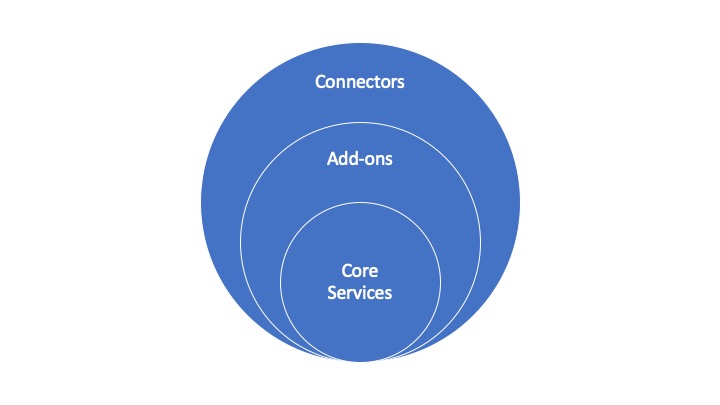Once your IT Ops team determines that AIOps is the right move forward for your organization, your next step is to choose between a commercial or open-source tool.
You can find many online articles and tools to help evaluate the features and costs of commercial AIOps solutions. But what about open-source options?
A growing number of open-source tools incorporate AIOps features. But despite a low- or no-cost purchase price for the core tools, open source is often more expensive to deploy and can increase the cost of risk.
Some open-source tools lack the features of their commercial counterparts. Those missing AIOps features offer the open-source providers a means to monetize aspects of the solution.
Here's how to determine whether a commercial or open-source solution is right for your organization.
Many choices, few holistic solutions
In the world of open-source AIOps, there are many tools you can choose from. Keep in mind that most are tactical in nature and not holistic. The sorts of holistic AIOps systems you'll find in the commercial world are few and far between in the open-source market.
For example, there are many open-source log anomaly detection systems. Most employ AI capabilities that include deep learning, as well as other analytical systems that work on a set of data that must be gathered in other ways, and AIOps tools continue to evolve.
Focusing on runtime environments, you could find an AIOps tool that specializes in Python deployments, but you're out of luck if you try to take that same tool to Java or Node.js. However, if you're a 100% Python shop, an AIOps tool directed at the specific needs of Python-built application deployments and operations is a good thing.
Other open-source tactical approaches exist as well. Some types of logs can be analyzed without modification using a self-named AIOps open-source tool, but others require that the log be read in a predefined static format. Few have connectors to the most popular platforms and databases—but most open-source AIOps systems' builders are happy to sell you the connectors as a means to monetize support of the open-source platform.
The allure of free
Here are the primary tradeoffs and considerations to keep in mind as you consider open-source options.
First, open source is almost a religion in some enterprises. These are shops that view open source as a means to ensure their input into the road map of the core product. It can also ensure their interest in the core technology if the primary company that contributed to the open-source project goes under or, in a more likely scenario, gets sold.
The tradeoff, of course, is that you must deal with a few tiers of the open-source AIOps solution. The first tier is the core system, which is typically open source and supported by a community that you'll likely become a part of (see Figure 1).
Figure 1: Typical open-source AIOps tools consist of three tiers. Only the first tier is truly free.
In the core system tier, the following features may exist:
- AI-enabled anomaly detection
- AI-enabled alarm convergence
- AI-enabled time series forecasting method
- AI-enabled association analysis for alarms
Remember that not all the features listed above will be supported. Indeed, in most open-source tools, they won't be.
Moving out from the core services, most open-source AIOps tools offer add-ons. These are subsystems that can expand the features of open-source AIOps tools by using closed-source (proprietary) systems to extend the functionality for a license fee. And, in many cases, you need to purchase services to enable those add-on features.
Add-on features could include enhanced AI capabilities, log analysis, or specific AIOps features such as monitoring and managing ERP systems or cloud-based applications.
Next are connectors that typically you must buy. You'll need these to connect to systems you want to monitor and manage, and these offerings may include security, governance, and other operations tools.
These connectors are mandatory if you leverage the open-source AIOps tools to talk to the system you want to manage. However, the open-source vendors often offer the option to write your own connectors using an API that's built into the core services.
You get what you pay for?
Here are three things to consider when you think through the value of using open-source versus commercial AIOps tools.
Open-source tools typically focus on a niche
They are often specific kinds of systems, such as log analysis, alarm mediation, or anomaly detection. It's difficult to find open-source tools that provide all the features out of the box that most enterprises need to manage and monitor a multi-cloud deployment, for example.
Niche AIOps solutions are right for some enterprises
An enterprise might want to use AIOps to do anomaly detection and nothing else. Dashboards are unimportant, but access to the source code provides a tremendous value.
Enterprises rarely consider the true cost of ownership
Open-source AIOps tools are often selected because the enterprise leverages no other proprietary/closed-source tools, typically for the reasons listed above. Even if the true cost of "free" AIOps is 10 times that of a commercial solution, the selection process does not consider these costs.
Open-source add-ons usually require purchased connectors, as well as the purchase of services needed to operate the add-ons. Because most open-source AIOps deployments are complex, their operating costs usually surpass those of commercial tooling.
Tool license costs are often secondary to their value
Some enterprises routinely select a commercial tool without regard to the license cost if the overall value it does or could bring results in an improved ROI. Value factors can include the ability to reduce downtime and self-heal using the automation provided by the tool.
An AIOps tool's integration capabilities should be a priority
This includes integration with security, governance, and other ops tools. In some cases, this is where open-source AIOps tools can shine. You have the code, and the vendor provides an open API. Thus, most tools can be integrated as long as the enterprises are willing to do the work themselves.
The enterprise could sell these connectors back to the community or, downstream, take advantage of the work done by the community.
How to make the tough calls
If you're on the fence between commercial and open-source AIOps tooling, how do you choose? Here are a few more factors to consider:
Talent
If you don't have the required talent on staff to alter or configure complex open-source AIOps tools, then a commercial tool is the answer. Otherwise, you need a full stack of developers who can work with your open source code distribution and extend the tool's capabilities to meet your specific needs.
Enterprises that move toward open-source AIOps tools without the required staff usually fail. The alternative could be a hiring spree that costs 20 times more than a commercial solution.
Maintenance
Vendors that distribute open source code for an AIOps tool, as well as those that sell add-ons and connectors, also provide deployment and maintenance services. While these activities can vary a great deal, the costs of maintaining open-source systems versus commercial systems are about the same, all things being equal.
Road maps
The future of an AIOps tool is as important as what features and functions it currently offers. The argument from the open-source side of things is that open source is community-driven and directly caters to the needs of its users. The time it takes to develop and push out new features depends upon the speed and interest of the contributing developers, many of whom volunteer their time.
Profit drives commercial AIOps tools and influences the road map as well. There are advantages to having resources dedicated to continuously improving a commercial AIOps tool with a single product management organization and published vision.
The open-source crowd would remind you that your voice is only one among thousands of users, whereas they can directly drive improvements. Moreover, the tooling that will become systemic to your enterprise systems, and thus difficult and costly to decouple, could force its removal if the company shutters its doors or is purchased by a larger company that quickly sunsets the tool.
Either way, you're stuck with a short timeline to find and implement a replacement solution.
Your needs should be first and foremost
Your ability to understand your own requirements means everything, no matter if you move to a commercial or open-source tool. Some enterprises lose sight of this fact, given an almost religious fervor around selecting tools that are either all open source or all closed source (commercial).
That’s not the core question. Define your requirements; they will drive the answer.
Considering the importance of this technology, the selection process should be an independent endeavor that considers all options, all tools, and the ability to select more than one or two tools, if needed.
Chances are good that AIOps will become a stack of tools at some point, and perhaps a mix of open-source and commercial tools that work together. We can only hope.
Keep learning
Choose the right ESM tool for your needs. Get up to speed with the our Buyer's Guide to Enterprise Service Management Tools
What will the next generation of enterprise service management tools look like? TechBeacon's Guide to Optimizing Enterprise Service Management offers the insights.
Discover more about IT Operations Monitoring with TechBeacon's Guide.
What's the best way to get your robotic process automation project off the ground? Find out how to choose the right tools—and the right project.
Ready to advance up the IT career ladder? TechBeacon's Careers Topic Center provides expert advice you need to prepare for your next move.




